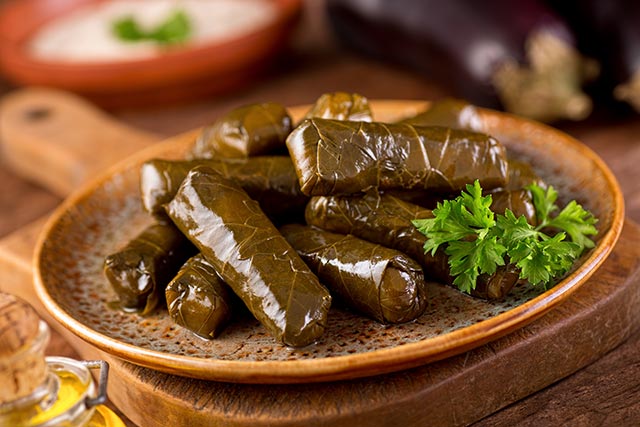Study: Grape leaves exhibit antioxidant, anti-hypercholesterolemic properties
03/26/2019 // Michelle Simmons // Views
Tags: alternative medicine, antioxidants, atherosclerosis, cardiovascular health, cholesterol, disease treatments, goodmedicine, grape leaves, grapes, herbal medicine, high cholesterol, hypercholesterolemia, natural cures, natural medicine, Vitis vinifera

- Grape seed, fruit, and its extract are already widely used as a functional food.
- Grape leaves are also edible and are even used for cooking.
- In this study, researchers at Maharishi Markandeshwar University in India investigated the anti-hypercholesterolemic potential of red grape leaf extract in rats.
- The researchers carried out a qualitative and quantitative phytochemical screening of red grape leaf extract to identify its phytoconstituents.
- They induced hypercholesterolemia with high cholesterol diet in rats, then treated the animals with red grape leaf extract to evaluate its anti-hypercholesterolemic activity for 21 days.
- During the study period, the researchers analyzed parameters like lipid profile, liver function, atherogenic index, and histopathological studies.
- The researchers found tannins, flavonoids, saponins, steroids, terpenoids, and phenolics in red grape leaf extract.
- Red grape leaf extract significantly reduced cholesterol level and improved high-density lipoprotein (HDL) cholesterol level.
- In addition, the administration of red grape leaf extract reduced the disruption of endothelial lining and thickness of blood vessel lining.
- The researchers suggested that the anti-hypercholesterolemic efficacy of red grape leaf might be attributed to the presence of active phytoconstituents and its antioxidant efficacy.
In conclusion, these findings suggest that red grape leaves can improve cholesterol levels due to their phytochemical content and antioxidant properties.
Read the full text of the study at this link.
To read more studies on other foods that lower cholesterol levels, visit FoodIsMedicine.com.
Journal Reference:
Devi S, Singh R. EVALUATION OF ANTIOXIDANT AND ANTI-HYPERCHOLESTEROLEMIC POTENTIAL OF VITIS VINIFERA LEAVES. Food Science and Human Wellness. September 2017; 6(3): 131-136. DOI: 10.1016/j.fshw.2017.07.002
Related Topics
alternative medicine antioxidants atherosclerosis cardiovascular health cholesterol disease treatments goodmedicine grape leaves grapes herbal medicine high cholesterol hypercholesterolemia natural cures natural medicine Vitis viniferaLatest News
Related News
11/21/2023 / By Arsenio Toledo
11/21/2023 / By Evangelyn Rodriguez
11/21/2023 / By Zoey Sky
11/20/2023 / By Arsenio Toledo
11/17/2023 / By Zoey Sky
11/15/2023 / By Kevin Hughes
Take Action:
Support Natural News by linking to this article from your website.
Permalink to this article:
Copy
Embed article link:
Copy
Reprinting this article:
Non-commercial use is permitted with credit to NaturalNews.com (including a clickable link).
Please contact us for more information.
Please contact us for more information.






















